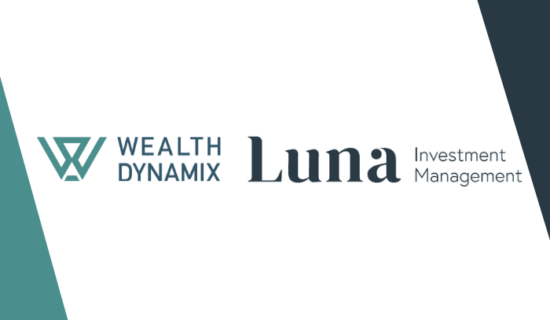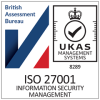Wealth management technology that supports scalability aids a more agile, dynamic wealth management operating model. However, given the established nature of incumbent businesses, a patchwork of legacy systems can present a roadblock to innovation.
Inaction may cost firms dearly as competitors unhindered by legacy technology take advantage of new technologies capable of supercharging their client interactions, yet a recent Gartner report suggests it is still essential for long-standing firms to fully assess the challenges before rushing to update their infrastructure. The 2024 Gartner report warns of a high chance of future buyer remorse, citing that ‘70% of software buyers experience regret’. The reasons behind this statistic include everything from higher-than-expected costs to a slow or difficult implementation process, incompatibility with existing systems, and overly complex or superfluous features.
Cutting through the complexity
So, how can firms avoid experiencing the same levels of dissatisfaction with their implementation? By exploring the fundamental challenges associated with acquiring and implementing a new wealth management CLM platform and then analysing any bespoke needs driven by the firm’s size, service style and client segments, it will become easier to arrive at an optimal solution. To minimise buyer remorse and find a platform that delivers, some core considerations offer a great starting point for a positive outcome.
A closer look at the challenges
Compliance
Equipping the firm with the tools to navigate a complex and constantly evolving regulatory landscape has to top the priority list. Digitising compliance processes can not only reduce time spent administering compliance and minimise risks, but it can also potentially greatly improve the quality and usage of client data across the client lifecycle.
A deeper level of insight can be harnessed with a trustworthy single source of data, adequate tracking and logging of client interactions, and the advantages of compliance automation. This is exactly what you should be aiming for in your optimal solution. For example, key KYC data including attitude to risk, demographics and preferences, can be digitally analysed to identify other products and services that may be relevant to the client, thereby creating opportunities for AuM growth and increased share of wallet.
Platforms implemented in the Cloud can eradicate many of the headaches associated with new regulatory guidance. With revised compliance measures applied as and when needed by a specialist third party, firms will find themselves able to retain a greater focus on client activity, without experiencing a detrimental impact on their internal resources.
Data Security and Privacy
Hand in hand with compliance, it is essential that client data is robustly managed and secure. When selecting an appropriate vendor, CIOs and CEOs should scrutinise their cybersecurity measures, encryption protocols and ability to leave an auditable data trail. Of course, a FinTech expert does not necessarily equate to a cybersecurity expert, so many FinTechs deploy the technology and expertise of security specialists for the ultimate reassurance and de-risking of their solution. At Wealth Dynamix, for example, we have partnered with REGDATA to create an industry first – a fully tokenised CLM solution in the Cloud.
Automation and Client Relationship Building
76% of wealth management executives stated that ‘improving client experience is vital’ in the Capgemini World Wealth Report 2023. Automation is something of a goal and a challenge in this area, for there has to be a certain level of advisor interaction to ensure clients are fully educated, supported and protected. This is where bespoke wealth management solutions can be invaluable; supporting a positive culture, enabling advisors, back office and clients to feel more informed and connected through greater transparency, insight and regulation.
For firms behind the technological curve, digitisation of the client lifecycle can initially appear at odds with the inherently personal nature of helping individuals manage their finances and work towards their financial goals. However, through a hybrid style of service, it is wholly possible to create a more personalised and intuitive client journey.
Analysis of client segments will support the mapping of the optimal client journey by understanding at what stages or instances face-to-face an advisor’s expertise is essential and when, conversely, automation can take the pain out of an admin-heavy process such as onboarding. Knowing your clients and the internal culture you wish to nurture, you can prioritise the capabilities and features which are most vital to secure via your solution. This might be a self-service portal, robo-advice, or the ability to analyse client data and behaviour to identify cross-selling and upselling opportunities.
The possibilities are wide-ranging, so the challenge lies in defining the optimal client journey for each client segment.
Integration and scalability
As mentioned, the integration of new systems into a complex technological infrastructure cultivated over time can seem a hugely thorny challenge. Yet, over the past decade, there has been a big push towards standardisation and interoperability in FinTech solutions. This means that modern software and systems are designed to work seamlessly with a wide range of other technologies, including legacy systems. Standards such as APIs (Application Programming Interfaces) allow different software applications to communicate with each other, making integration much easier and more efficient. Similarly, advancements in middleware technologies, which act as intermediaries, facilitating integration between disparate systems, support a smoother transition to new technologies.
Cloud technology has to be the biggest game-changer for businesses wishing to scale more profitably though, for it permits a certain elasticity; services can be scaled up or down as needed to meet changing demands. As Cloud computing services are typically priced on a pay-per-use model, this presents a significant cost advantage, allowing firms to pay only for the resources they use whilst still giving firms global reach and the ability to expand into new regions.
A modular architecture can also be a useful attribute, enabling different components of a system to be developed, deployed, tested and updated independently. In this way, new technology can be added to the technology stack without disrupting the entire system.
From cloud technology to modular platforms and interoperability, incorporating all of these capabilities into your new solution can unlock significant cost savings over the longer term.
Differentiation
As digital communications and capabilities continue to revolutionise wealth management, firms will need to find new ways to differentiate themselves and win the trust of a new generation of investors; personalised service alone will no longer suffice because it will be the norm. Within the context of fierce competition and wealth transfer, it is important to meet this challenge at the outset to determine how your new technology will help your firm stand out from the crowd.
End-to-end process optimisation can reinforce and embed your values throughout the client journey while improving service standards, business scalability, and efficiency. Configurable solutions can assist in this respect, allowing for the branding of a client interface, conversational platforms that can be tweaked to your firm’s tone of voice, plus bespoke alterations to make the user experience more consistent, ownable and engaging.
The technology is ready, are you?
In summary, wealth management firms can mitigate the challenges of deploying new technology through careful planning and analysis of their unique business needs. Innovations such as Cloud technology and APIs are eroding the barriers to modernisation associated with legacy systems, freeing firms to be more strategic and purposeful in their bid for scalability and improved ways of working. A more dynamic, agile and empowered industry is emerging and for those still on the fence, it is important to grasp the mettle to compete.
Our consultants are experts in the complexities of upgrading your technology for an improved client journey and business model. Get in touch to start your transformation journey.
Find out more about our quick-start, modular Cloud solution here.





